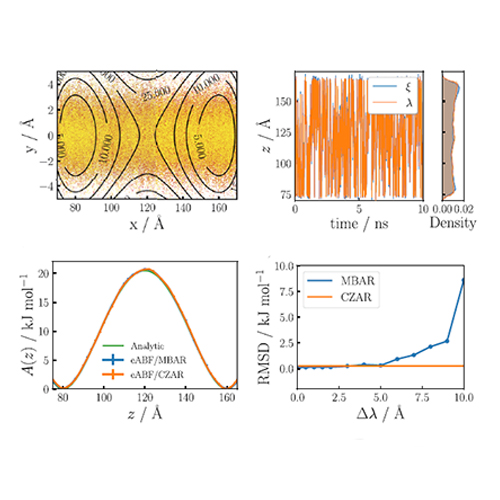Statistically optimal analysis of the extended-system adaptive biasing force (eABF) method
2022-07-13
Andreas Hulm, Johannes C. B. Dietschreit and Christian Ochsenfeld
J. Chem. Phys. 157, 024110, 2022
The extended-system adaptive biasing force (eABF) method and its newer variants offer rapid exploration of the configuration space of chemical systems. Instead of directly applying the ABF bias to collective variables, they are harmonically coupled to fictitious particles, which separates the problem of enhanced sampling from that of free energy estimation. The prevalent analysis method to obtain the potential of mean force (PMF) from eABF is thermodynamic integration. However, besides the PMF, most information is lost as the unbiased probability of visited configurations is never recovered. In this contribution, we show how statistical weights of individual frames can be computed using the Multistate Bennett’s Acceptance Ratio (MBAR), putting the post-processing of eABF on one level with other frequently used sampling methods. In addition, we apply this formalism to the prediction of nuclear magnetic resonance shieldings, which are very sensitive to molecular geometries and often require extensive sampling. The results show that the combination of enhanced sampling by means of extended-system dynamics with the MBAR estimator is a highly useful tool for the calculation of ensemble properties. Furthermore, the extension of the presented scheme to the recently published Gaussian-accelerated molecular dynamics eABF hybrid is straightforward and approximation free.








